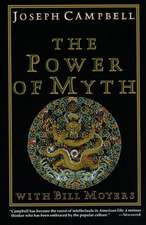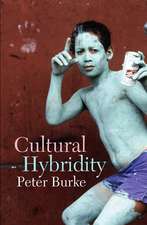American Allegory: Lindy Hop and the Racial Imagination
Autor Black Hawk Hancocken Limba Engleză Paperback – 29 iul 2013
“Perhaps,” wrote Ralph Ellison more than seventy years ago, “the zoot suit contains profound political meaning; perhaps the symmetrical frenzy of the Lindy-hop conceals clues to great potential power.” As Ellison noted then, many of our most mundane cultural forms are larger and more important than they appear, taking on great significance and an unexpected depth of meaning. What he saw in the power of the Lindy Hop—the dance that Life magazine once billed as “America’s True National Folk Dance”—would spread from black America to make a lasting impression on white America and offer us a truly compelling means of understanding our culture. But with what hidden implications?
In American Allegory, Black Hawk Hancock offers an embedded and embodied ethnography that situates dance within a larger Chicago landscape of segregated social practices. Delving into two Chicago dance worlds, the Lindy and Steppin’, Hancock uses a combination of participant-observation and interviews to bring to the surface the racial tension that surrounds white use of black cultural forms. Focusing on new forms of appropriation in an era of multiculturalism, Hancock underscores the institutionalization of racial disparities and offers wonderful insights into the intersection of race and culture in America.
In American Allegory, Black Hawk Hancock offers an embedded and embodied ethnography that situates dance within a larger Chicago landscape of segregated social practices. Delving into two Chicago dance worlds, the Lindy and Steppin’, Hancock uses a combination of participant-observation and interviews to bring to the surface the racial tension that surrounds white use of black cultural forms. Focusing on new forms of appropriation in an era of multiculturalism, Hancock underscores the institutionalization of racial disparities and offers wonderful insights into the intersection of race and culture in America.
Preț: 267.26 lei
Nou
Puncte Express: 401
Preț estimativ în valută:
51.14€ • 53.53$ • 42.56£
51.14€ • 53.53$ • 42.56£
Carte tipărită la comandă
Livrare economică 31 martie-14 aprilie
Preluare comenzi: 021 569.72.76
Specificații
ISBN-13: 9780226043104
ISBN-10: 022604310X
Pagini: 280
Dimensiuni: 152 x 229 x 20 mm
Greutate: 0.39 kg
Editura: University of Chicago Press
Colecția University of Chicago Press
ISBN-10: 022604310X
Pagini: 280
Dimensiuni: 152 x 229 x 20 mm
Greutate: 0.39 kg
Editura: University of Chicago Press
Colecția University of Chicago Press
Notă biografică
Black Hawk Hancock is assistant professor of sociology at DePaul University. He is also coauthor of Changing Theories: New Direction in Sociology.
Cuprins
Acknowledgments
Prologue: This Strange Dance
Lead In: The Cost of Insight
Introduction: The Lindy Hop Revival
1 Finding the Pocket
2 Caught in the Act of Appropriation
3 Put a Little Color on That!
4 Steppin’ Out of Whiteness
Lead Out: Learning How to Make Life Swing
Conclusion: Toward New Territory
Notes
References
Index
Recenzii
“In American Allegory, Black Hawk Hancock has written a rich and intricately detailed ethnography of the distinct worlds of lindy hop and steppin'. Here, readers are offered a guide to the ways in which cultural expressions have come to occupy separate racial and spatial realms and how this apparent segregation of race, culture and identity is practiced in the United States today.”
“Black Hawk Hancock provides a fascinating dance ethnography situation within the larger context of Chicago’s segregated social landscape. By deploying Bourdieu’s notion of ‘habitus’ as a recurring conceptual hook in a ‘carnal sociology’ reminiscent of Loic Wacquant’s, Hancock offers an entertaining and valuable new perspective in the ongoing debates about the organization and reproduction of America’s racial order. American Allegory is a fluent and nuanced piece of scholarship.”
"You will be glad to have come across this study. It keeps a good balance between academic study and cultural practice 'as told by an insider' who carefully investigates an art form both intellectually and physically."
"Hancock critically engages the racial imagination surrounding the expressive nature of dancing and how black and white bodies are coded differently. His argument is an important expansion of scholarship in American culture because Hancock posits the body as a site of cultural memory. . . . An important piece of scholarship on racial displacement, expressive culture, and the residue of racial segregation in urban spaces and places. The author makes an original contribution to American culture by the honesty and bravado he displays by writing a genealogy of the Lindy Hop and the complications of race that influence the dance from the 1920s to the present day Steppin', which is performed today."
“Hancock’s American Allegory represents the first book-length meditation on how the neoswing renaissance, and its ahistorical cross-cultural engagement with ‘African American cultural forms,’ sustains racial domination. . . . Hancock’s prose is…inspired. . . . . Allegory deserves a readership beyond well-credentialed white liberals committed to more expansive forms of self-loathing and would be a vital addition to syllabi in courses on racialization, culture, and methodology. Like the protagonist of Invisible Man, Hancock’s hunger for justice remains unabated, I figure, and I look forward to his next excavation of the remaining riddles in the American vernacular.”














